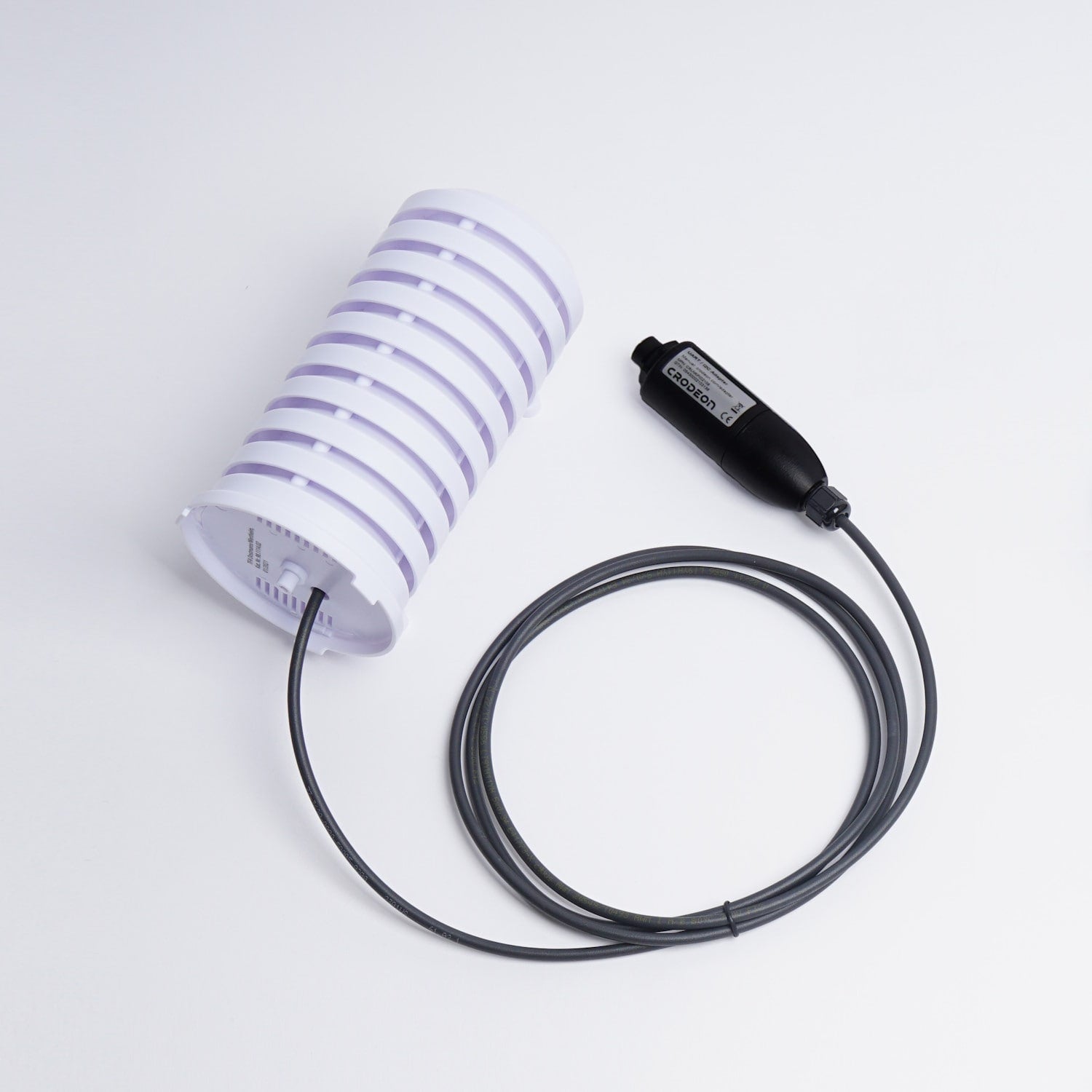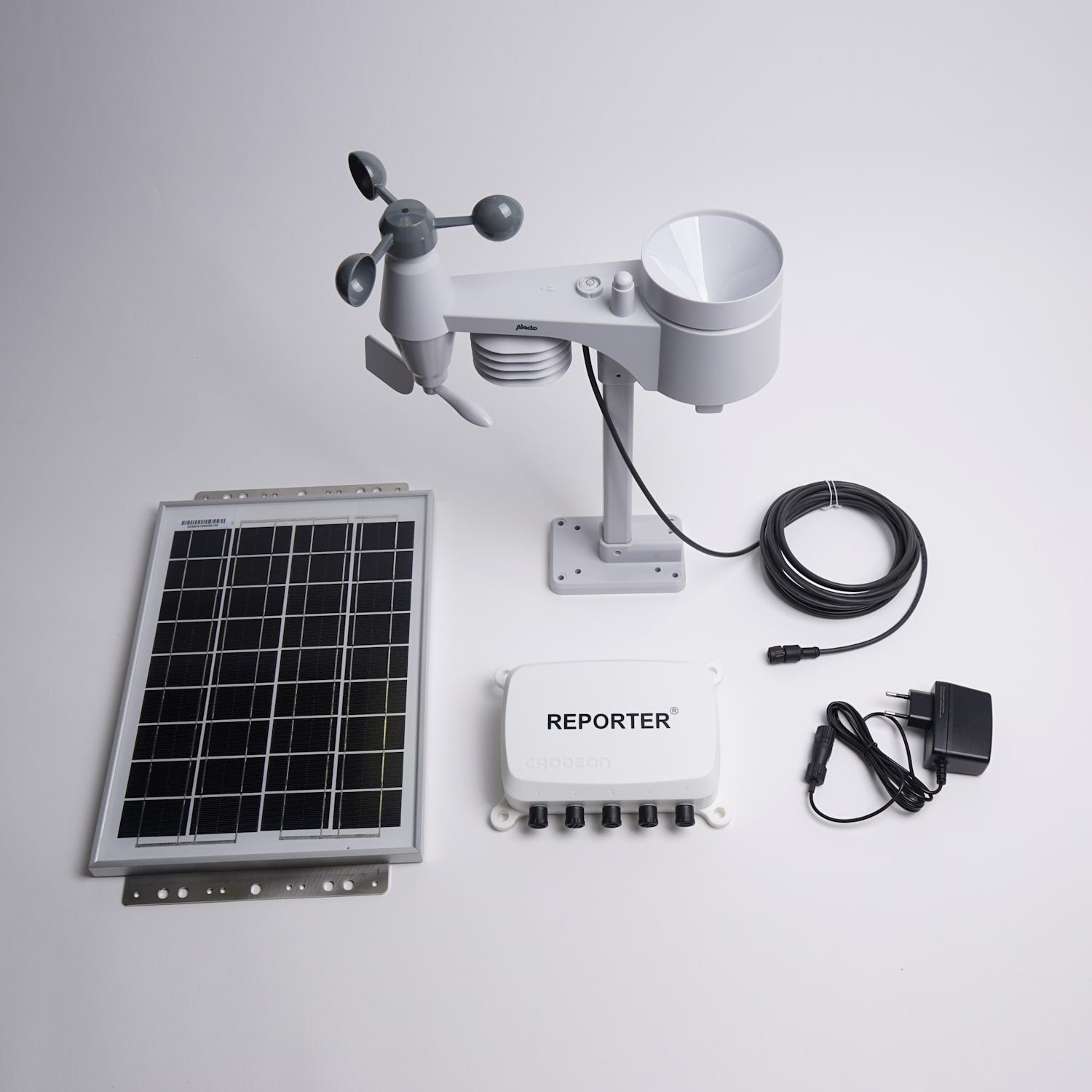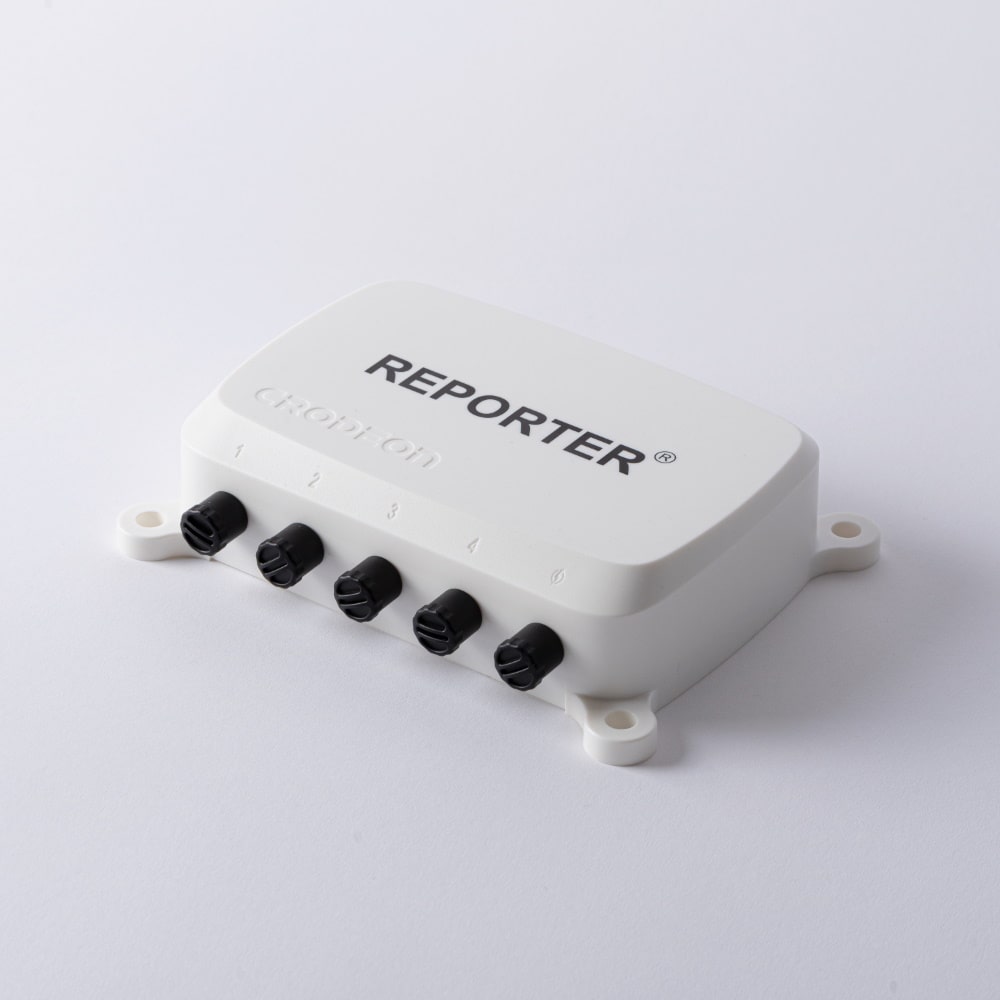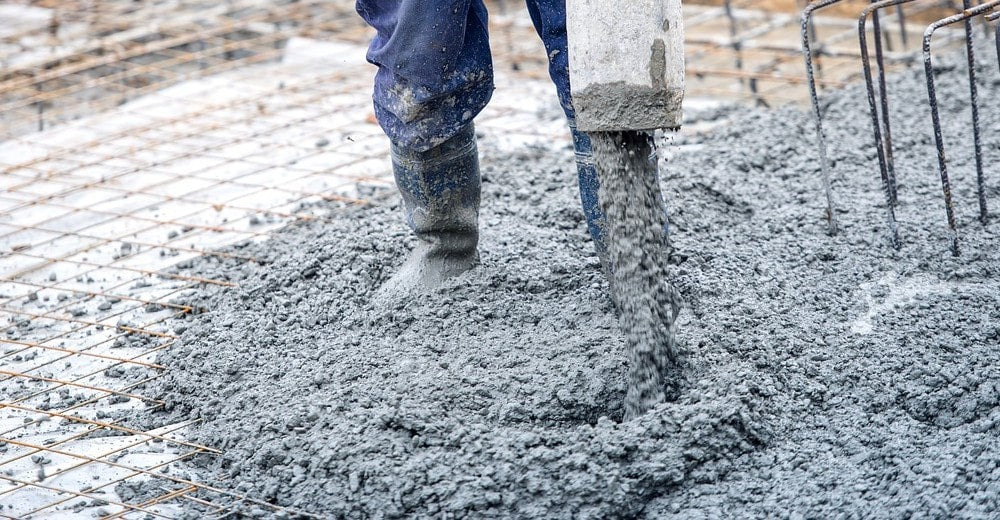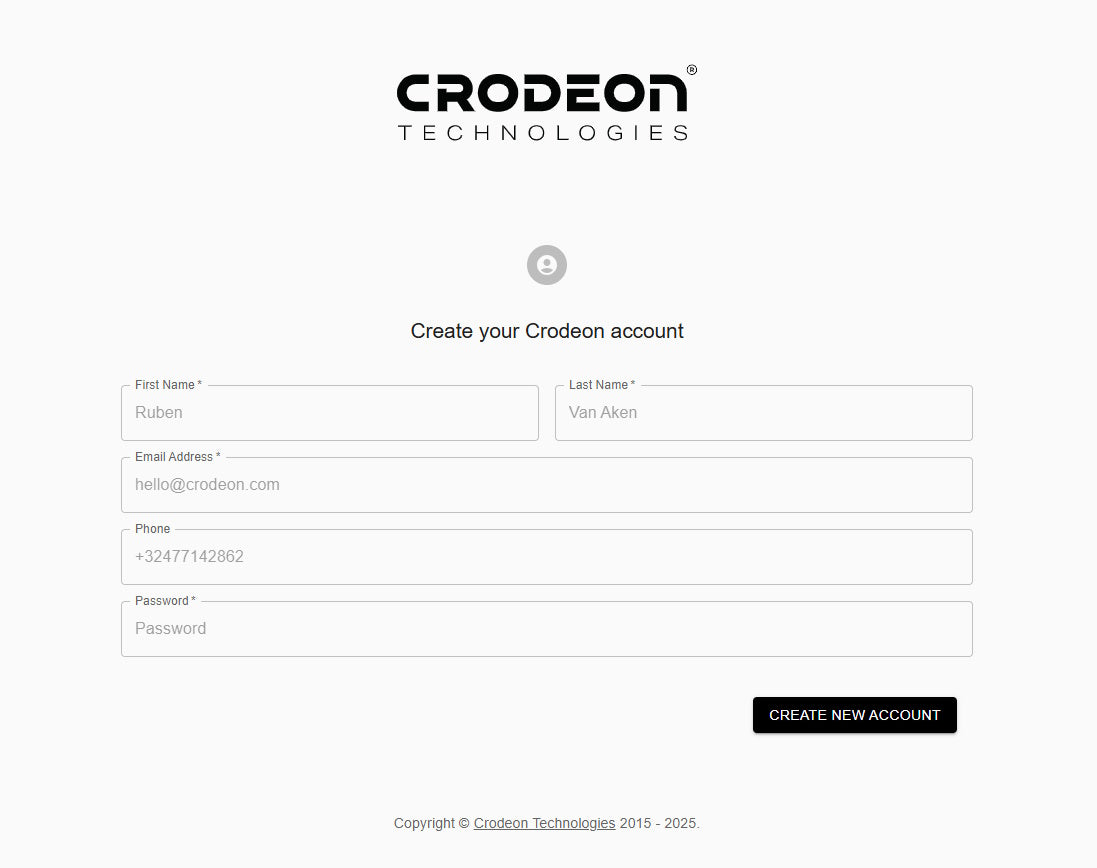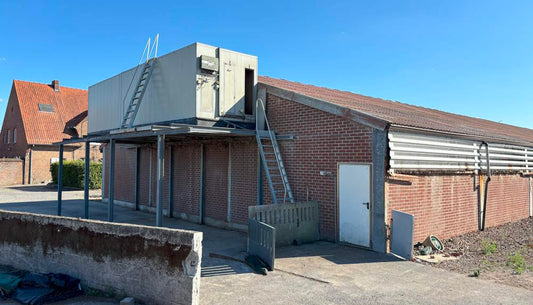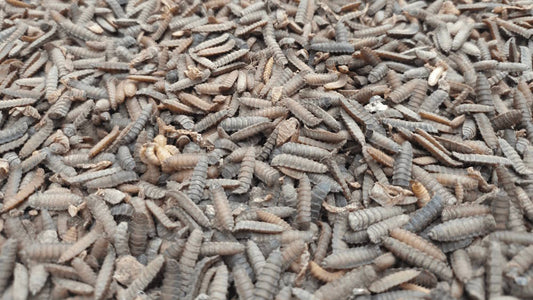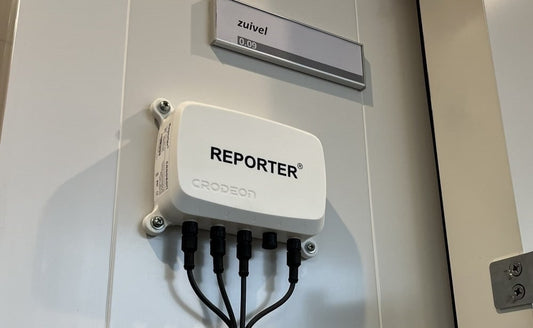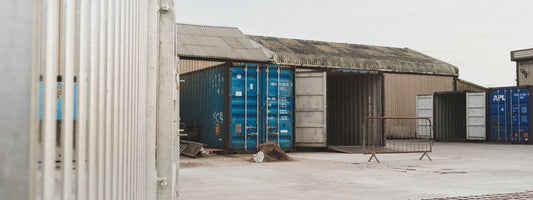Taupunkttemperatur & Luftfeuchtigkeit für Baukleber messen
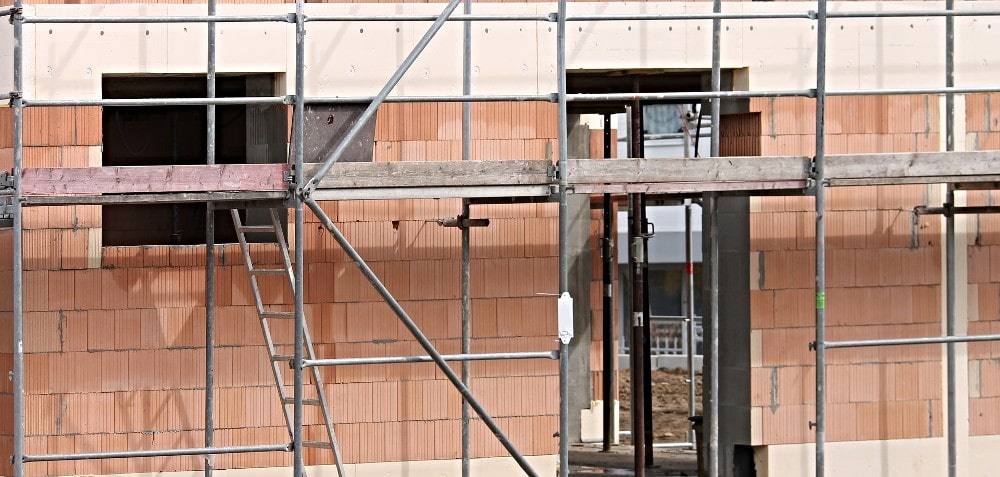
Ein Bauunternehmen hat uns kürzlich mit folgender Anfrage zur Messung von Temperatur, relativer Luftfeuchtigkeit (RH) und Taupunkttemperatur kontaktiert.
Für die Installation unserer Fassadensysteme müssen wir sicherstellen, dass die Temperatur der Wand, auf der wir arbeiten, zwischen 5 °C und 30 °C liegt.
Außerdem müssen wir sicherstellen, dass die relative Luftfeuchtigkeit (RH) der Wand unter 90 % liegt und die Temperatur mindestens 3 °C über der Taupunkttemperatur beträgt. Dies sind die Produktspezifikationen des Innotec-Klebers, den wir verwenden. Wir müssen diese Vorgaben genau einhalten.
Wir möchten alle zwei Stunden eine Temperaturmessung erhalten und Benachrichtigungen, falls Abweichungen auftreten. Kann Reporter uns dabei helfen, diese Parameter zu messen und zu überwachen?
Die Antwort lautet ja! Doch zunächst erklären wir, warum die Messung von Taupunkt, Temperatur und relativer Luftfeuchtigkeit beim Verkleben auf einer Baustelle so entscheidend ist.
Wie beeinflussen Temperatur und Luftfeuchtigkeit die Klebehaftung?
Wir haben Innotec, einen Hersteller von Industrieklebern, kontaktiert, um herauszufinden, warum es so wichtig ist, diese Richtlinien zu Temperatur, Luftfeuchtigkeit und Taupunkt genau zu befolgen.

Klebstofftemperatur
Viele Klebstoffe können nur innerhalb eines bestimmten Temperaturbereichs verwendet werden. Wir nehmen den Fassadenkleber von Innotec als Beispiel.
Zu kalt
Wird der Klebstoff auf eine Oberfläche aufgetragen, die unter 5 °C liegt, kann er nicht korrekt haften. Der Kleber ist zu kalt und kann nicht ordnungsgemäß aushärten. Dies liegt daran, dass bestimmte chemische Bindungen eine Mindesttemperatur benötigen, um sich zu bilden. Wird diese Temperatur nicht erreicht, kann der Kleber nicht richtig aushärten oder haftet nicht wie vorgesehen. Das Ergebnis: Die Fassadenplatten bleiben nicht an Ort und Stelle.
Die Mindesttemperatur von 5 °C gilt nicht nur für den Kleber selbst, sondern auch für alle weiteren beteiligten Materialien: die Wand oder das Rahmenprofil, auf das geklebt wird, sowie die zu montierenden Platten.
Doch nicht nur der Klebstoff ist betroffen. Auch andere Produkte wie Reinigungsmittel, Primer oder Klebebänder funktionieren möglicherweise nicht wie beabsichtigt. Der Grund ist derselbe: Chemische Reaktionen laufen bei niedrigen Temperaturen langsamer ab. Dies beeinflusst insbesondere die Trocknungszeiten und die Haftfähigkeit von Klebebändern.
Zu warm
Temperaturen über 30 °C verursachen hingegen ein anderes Problem: Chemische Reaktionen laufen schneller ab als vorgesehen. Der Kleber beginnt schneller auszuhärten als in den technischen Informationen angegeben. Nicht nur der Kleber, sondern auch alle anderen beteiligten Materialien reagieren anders als erwartet.
Das Reinigungsmittel verdunstet möglicherweise, bevor es den Schmutz ausreichend lösen konnte. Es trocknet zu schnell, sodass es der Bauarbeiter nicht mehr rechtzeitig abwischen kann.
Auch Primer reagieren zu schnell und können den Untergrund nicht ordnungsgemäß vorbereiten, was sich später negativ auf die Haftung des Klebers auswirkt.

Doch nicht nur die Umgebungstemperatur spielt eine Rolle. Denken Sie an ein Aluminiumrahmenprofil, das den ganzen Tag in der Sonne stand (50-60 °C). Deshalb ist es notwendig, nicht nur die Lufttemperatur, sondern auch die Temperatur der Materialien selbst zu messen: die Wand oder das Rahmenprofil, den Kleber und die Fassadenplatten.
Klebstoff & relative Luftfeuchtigkeit
Materialien trocknen durch Verdunstung, aber das Trocknen ist nicht dasselbe wie Aushärtung. Aushärtung ist ein Prozess, bei dem sich die Textur eines Materials durch chemische Reaktionen verändert. Der hier besprochene Fassadenkleber ist ein MS-Polymer. Während des Aushärtungsprozesses reagieren die Verbindungen im Material mit Wasser (hauptsächlich aus der Umgebungsluft).
Die Luft kann nur eine begrenzte Menge Wasserdampf aufnehmen, wobei sich diese Menge abhängig von verschiedenen Parametern ändert. In unserem Fall ist die Temperatur der wichtigste Faktor. Je wärmer die Luft, desto mehr Wasser kann sie aufnehmen (relative Luftfeuchtigkeit/RH). Die RH gibt an, wie viel Wasserdampf in der Luft enthalten ist, im Verhältnis zur maximal möglichen Wasserdampfmenge bei dieser Temperatur.
Wie erwartet bedeutet eine hohe Luftfeuchtigkeit viele Wassermoleküle – und somit eine beschleunigte chemische Reaktion im MS-Polymer-Klebstoff. Besonders kritisch wird dies, wenn der Kleber direkter oder indirekter Hitze ausgesetzt ist. Eine hohe Luftfeuchtigkeit kann daher die Aushärtungszeit des Klebers erheblich verkürzen. Dies bedeutet, dass die äußere Schicht des gerade aufgetragenen Klebers bereits teilweise ausgehärtet ist, bevor Sie die Fassadenplatte an der Wand befestigen konnten…
Der Fassadenkleber kann nur dann korrekt aushärten, wenn die relative Luftfeuchtigkeit unter 80-90 % liegt. Andernfalls härtet er vorzeitig aus.

Klebstoff & Taupunkt
Der Kleber kann nur dann an der Fassadenplatte und dem Untergrund haften, wenn deren Temperatur mindestens 3 °C über der Taupunkttemperatur liegt.
Warum? Wenn 100 % gesättigte Luft abgekühlt wird, beginnt sich Wasser in Form von Tropfen zu bilden. Die Temperatur, bei der dies geschieht, wird als Taupunkt bezeichnet. Materialien, deren Temperatur unter dem Taupunkt liegt, beschlagen oder werden mit einem dünnen Wasserfilm überzogen. Genau dieser Taufilm verhindert, dass der Klebstoff die Fassadenplatte sicher mit der Wand oder dem Rahmen verbindet.
Andere Klebstoffhersteller wie Pro Part oder Bostik bestätigen dieselben Temperaturanforderungen. Fassadenkleber sollte nicht bei Temperaturen unter 5 °C oder über 30 °C verwendet werden. Bostik erklärt zudem detailliert, warum Taupunktmessungen für Industriekleber entscheidend sind.
„Wenn der Taupunkt erreicht wird, kann sich ein Wasserfilm (Tau) auf dem Rahmen und der Fassadenplatte bilden, was die ordnungsgemäße Haftung von Primer und/oder Klebstoff negativ beeinflussen kann.“
In welchen Situationen übersteigt die relative Luftfeuchtigkeit 80 %?
In Mitteleuropa erleben wir selten heiße Tage mit hoher Luftfeuchtigkeit, doch in Regionen mit tropischem Klima ist dies völlig normal. In Südostasien sind RH-Werte von 70-90 % keine Seltenheit. In gemäßigten Klimazonen tritt eine hohe relative Luftfeuchtigkeit meist bei sehr niedrigen Temperaturen auf – denken Sie an Morgentau und Nebel.
Hohe Luftfeuchtigkeit und Taupunkt in der Bauindustrie sind zudem saisonale Herausforderungen. Im Herbst und Winter ist die relative Luftfeuchtigkeit oft höher als im Frühling oder Sommer.
Die wichtigsten Erkenntnisse
Kann Reporter Temperatur, relative Luftfeuchtigkeit und Taupunkttemperatur messen und überwachen? Ja – und noch viel mehr! Egal, ob es um die Wetterbedingungen auf einer Baustelle oder die exakte Temperatur einer Wand oder eines Rahmens geht – Reporter unterstützt Sie zuverlässig.
Reporter ist kompatibel mit einer Vielzahl von Sensoren, die alles rund um Temperatur und Luftfeuchtigkeit messen. Das System ist Plug & Play – sobald der RH-Sensor angeschlossen und Reporter an seinem Platz installiert ist, ist Ihre Arbeit erledigt. Es ist kein Programmieren oder Verkabeln erforderlich. Der Prozess ist einfach, intuitiv und in kürzester Zeit abgeschlossen.
Sobald Reporter eingerichtet ist, sendet er seine Daten an die Cloud-Plattform Crodeon Dashboard. Dort können Sie Ihre Messwerte rund um die Uhr abrufen, das Messintervall festlegen und Alarmbenachrichtigungen aktivieren, falls einer Ihrer Messwerte (z. B. die Taupunkttemperatur) eine kritische Grenze überschreitet. Zudem können Sie historische Messwerte Ihrer Baustelle einsehen, herunterladen und in Excel exportieren.

Fragen?
Zögern Sie nicht, uns bei Fragen zu Ihrem Projekt zu kontaktieren – wir helfen Ihnen gerne weiter. Nutzen Sie das Kontaktformular auf dieser Seite, und wir melden uns umgehend bei Ihnen!
Besonderer Dank geht an Innotec!

